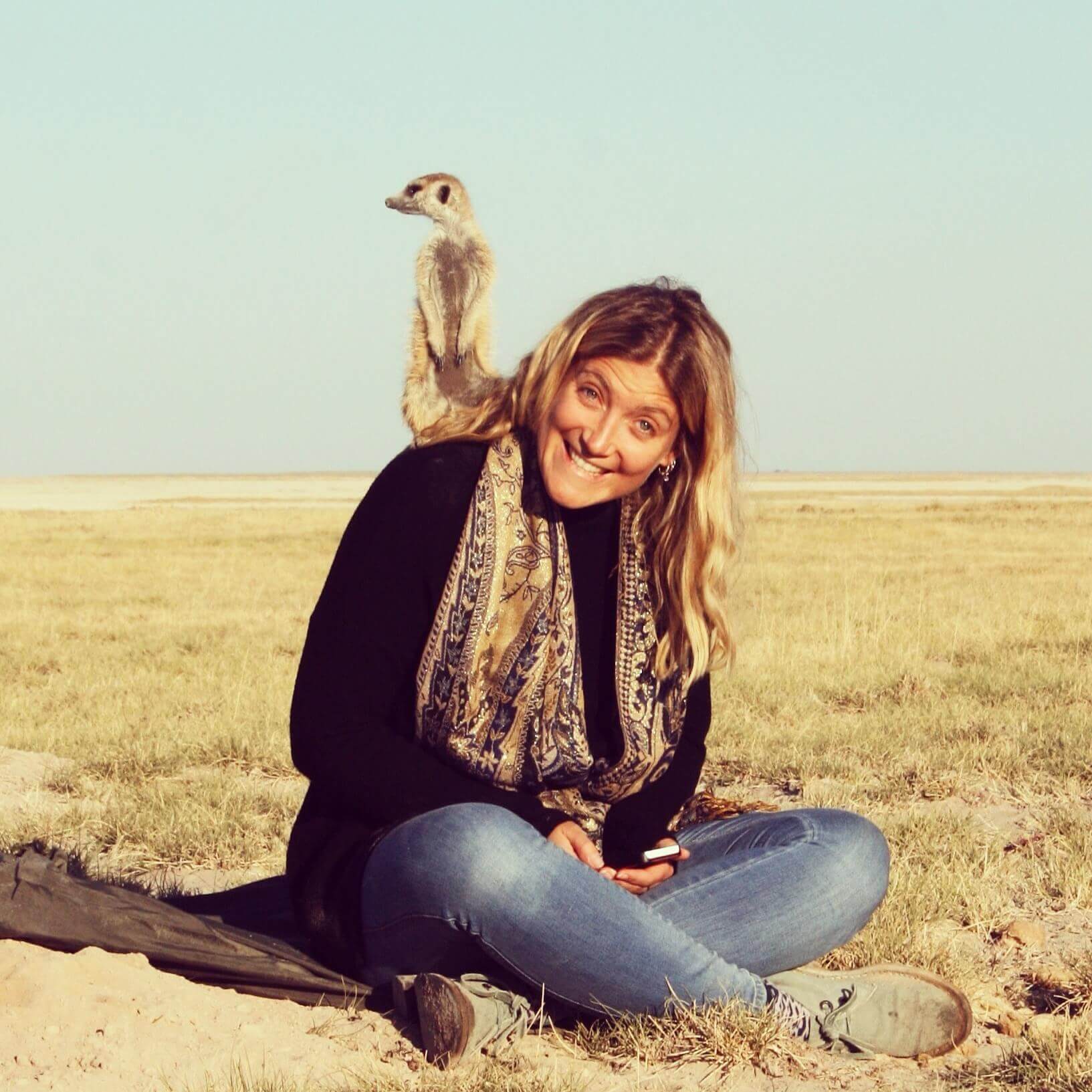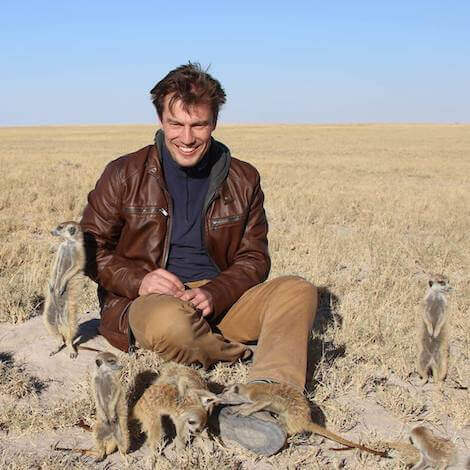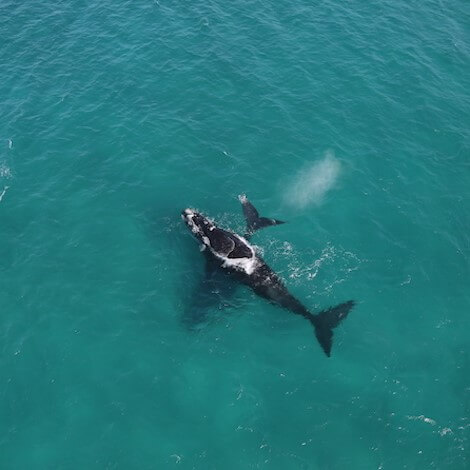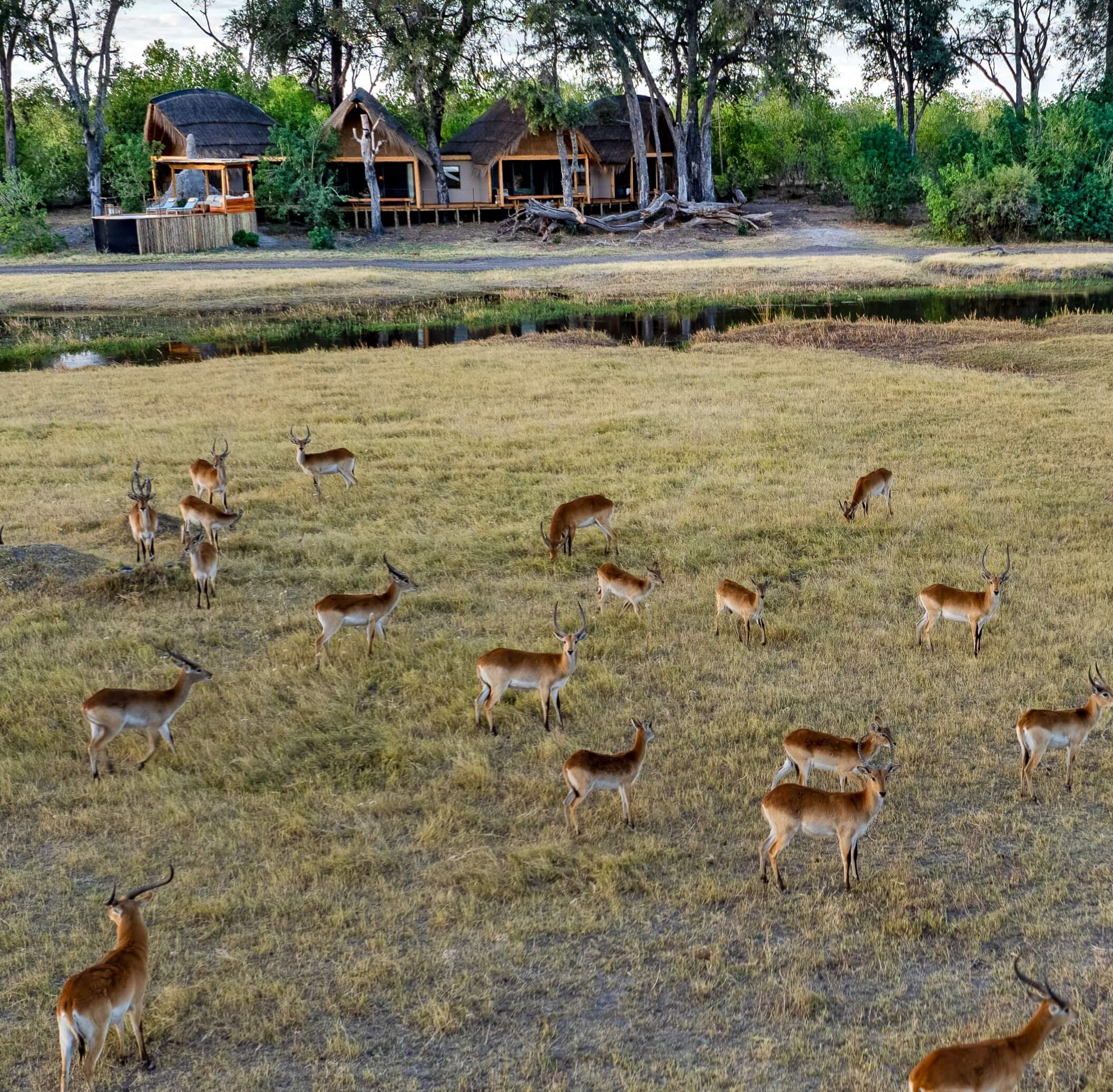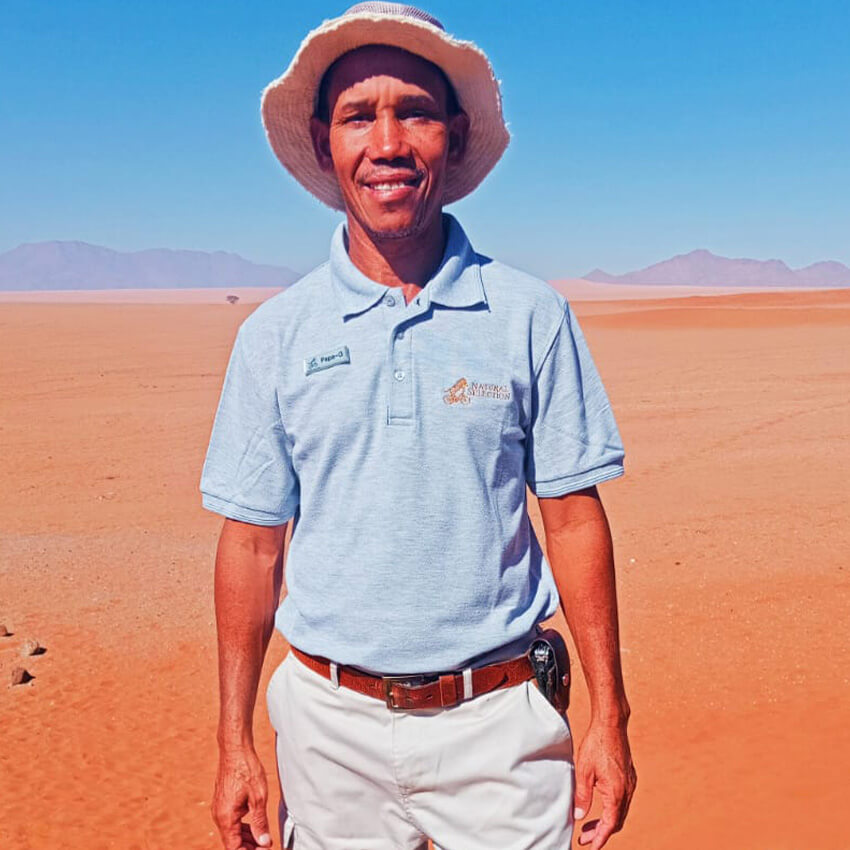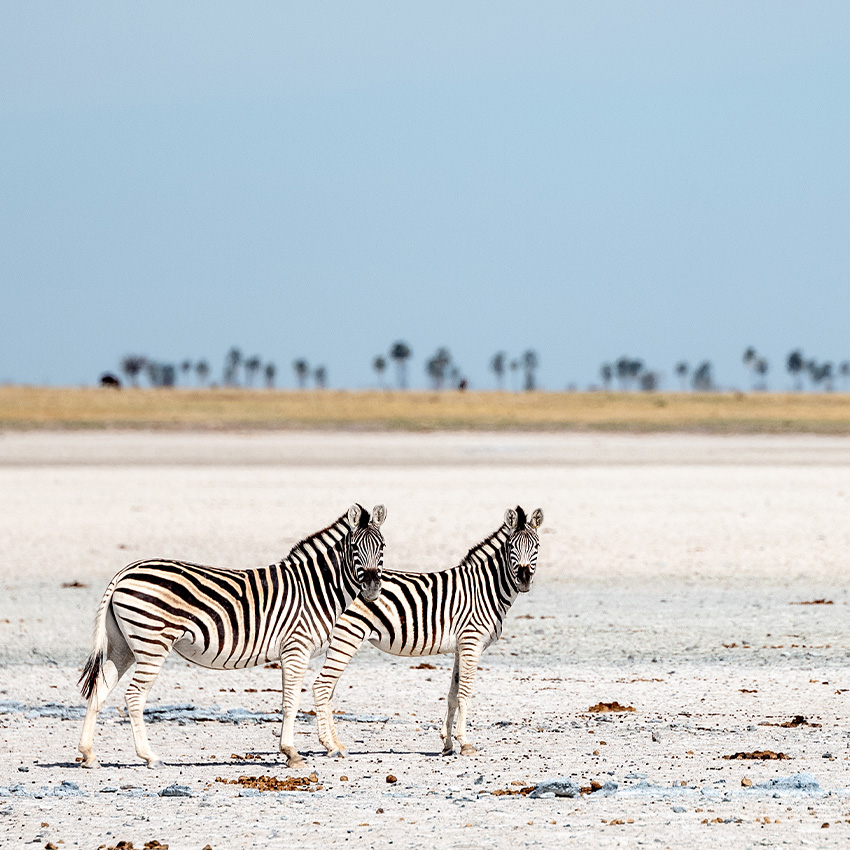Active
Popular
Starry, starry nights in Khwai Private Reserve
 Russell Crossey
Russell Crossey
 June 24, 2019
June 24, 2019
It had been an incredible day. Dawn had found us driving through a mist-shrouded Khwai landscape, the rising sun casting a burnished copper light over the subtly spiced turpentine and camphor smelling Mopane forest. We all breathed deeply and appreciatively and stopped to watch a pair of Arnot’s chats flitting after each other amongst the twisted and knotted Mopane branches. A Bradfield’s Hornbill whistled plaintively as it emerged from a deep round hole in a tree trunk and flew off in characteristic looping flight and a coqui francolin greeted the dawn with its characteristic ‘swempie’ call.
The day had flashed by in a kaleidoscope of tawny tinged images framed by an indescribably blue Botswana sky, all gift wrapped in the enticing perfume of the Kalahari. Zebra thundering through the broken camelthorn forest with a pride of lithe shapes herding and harassing until the melee ended in a cloud of dust. Snarling and whinnying in a cacophony of terror and triumph. The pale Kalahari sand stained crimson against the upended pattern of black and white and jostling cats.
Picnicking on the Khwai river, we were entertained to an endless procession of animals drawn to its clear, cool waters from the surrounding dry woodlands. Hippo cavorting in foaming tsunamis of spray against the emerald green riverine foliage. Impala picking their way through the dry golden grasses, pausing only to pick daintily at the odd camelthorn pod that littered the ground under the grotesquely convoluted ‘Mogothlo’( Vachellia erioloba) trees so characteristic of this landscape. Sharing all of this at the final fringe of the Angolan water’s thousand-mile journey into the desert, was indeed food for thought. A feast of sunlight, water, photosynthesis, and energy cycles surrounded our delicious helpings of food as the lions too arrived on the scene. Bellies sagging under the protein load as they lowered themselves and drunk deeply from the flow.
Arriving back at Hyena Pan camp, we sat mostly in reflective silence enjoying a late afternoon gin and tonic on the deck. Sensory overload that could only be diluted and dissipated by drinking in the bejeweled display that began to unfold above our heads.100 000 000 000 stars began to spill, like so many diamonds and crystals onto a sable black satin sky.
We were drawn away from the light, like bats to the dark, to better view this celestial smorgasbord. We found ourselves back in the game viewer, irresistibly pulled toward sunset pan. This massive pan formed a perfect black hole in the mopane forest providing a full 360 -degree view of the heavens above.
Standing in the inky blackness of a clearing in the mopane forest staring up at a star-spangled African sky, we were overcome with a sense of awe at the beauty and immensity of it all. A shooting star streaked across the inky black canvas above us, causing us all to instinctively gasp at the beauty of it all.’’ Do you realize that we are all made of stardust’’ whispered Lucy, and then spontaneously started singing Joni Mitchell’s classic tribute to life’’ We are stardust, billion-year-old carbon’’ ‘followed by Frank, Anne and myself happily chiming in ‘’caught in the devils bargain, and we got to get back to the garden’’. What a moment, four flower children of the 60’s sharing a ‘Woodstock’ moment under a star loud Kalahari sky.
Trying to make sense of the mindboggling science of the heavens is frustrating to our western minds. How does one even begin to get one’s head around the time span distances that one speaks of in terms of our celestial relatives? But Joni Mitchell nails it,’ We are in fact billion-year-old carbon.
After the ‘big bang’,14 billion years ago, the only atoms that occurred were Hydrogen atoms. These atoms reacting with each other by nuclear fusion created the energy-burning stars in our galaxy. All 100 000 000 000 of them. In the beginning, there was no oxygen or carbon and therefore no possibility of life (that means us too) anywhere in the cosmos. So where did the building blocks of us human beings and everything around us, come from. The answer is that they were assembled in the hearts of long-dead stars. It is in the process of dying that the stars produce the other chemical elements essential for life on earth. As a dying star begins to collapse, its core heats up to unimaginable temperatures. When this happens, the helium in its core will begin to fuse together to form oxygen and carbon. This is the origin of all carbon and oxygen in the universe. All this became clear as I stared up at Betelgeuse, a red supergiant that is in the process of dying and will ultimately explode spectacularly in a supernova explosion and recycle these vital elements back into the universe.
So, Joni, you are so right. Yes, all of us and all we had seen and experienced today are comprised of stardust. So that Zebra may have died on the dusty plains today, but its carbon will continue to be cycled and recycled throughout the universe providing a backbone for lifeforms yet to be born. Looking at Pleiades, a star nursey (or breeding ground) where clouds of gas from previously exploded stars swirl around in a nebula, awaiting the right conditions to coalesce and form new stars, we are assured that this process will continue unabated for billions of years to come.
With a multitude of half-answers swirling around our brains we groped our way back to the vehicle in the inky blackness. As I switched on the headlights, the dark circular pan was bathed in a cone of white light. Caught frozen in the light was an elephant, trunk paused in mid-scoop whilst drawing water to its mouth. Its body dusted in a fine white frosting of Kalahari silicate from rubbing a termite mound. Like some powdered Elizabethan thespian aristocrat in powdered wig and hose caught in the stage lights. A jackal trotted business like behind a flurry of hopping springhares into the enveloping darkness. Feeling like an intruder into this silent milieu, I cut the light and darkness whooshed around us once again. Another meteor arced across the blackness and I thought of Sir Laurence Van Der Post’s description of a shooting star in the Botswana night skies,” A shooting star is to the inky black fabric of a dark Kalahari night, what a bellowing lions roar is to the silence of that same night.’’ It was so difficult to turn on that ignition again.
Driving back to camp in contemplative silence we found ourselves with more questions than answers. I thought of the San bushman who had once guided me at Jack’s camp in the Makgadigadi Pans and whose uncomplicated wisdom had made so much sense to me. Trying to figure out how long 14 billion years ago is, is beyond the ken of the normal human imagination. We just have no reference point in terms of assimilating such immense figures. Our milky way galaxy is a mere speck amongst billions of other galaxies in our universe. One could sooner count every Mopane tree in Botswana than could one count all the stars in our galaxy. And where we had stood moments ago in the inky blackness, was on a spiral arm of our galaxy looking back toward its center. But such is the malady of the western mind that insists on needing to identify, classify and compartmentalize. We crave detail and scientific fact. How far away is it? Our sun is 150 million km away and it takes a ray of sunlight 8 minutes to reach earth, traveling at 300 000 km per second (the speed of light). Ok, I can get that. But that Beta Centauri, the closest point to the southern cross, is 490 light-years away and that the star we are seeing today is as it looked 490 years ago, as that light is only reaching us now. Huh? How was it formed? How big is it? (of course size matters).
But to our indigenous people, such explanations are not sought. They live instinctively and intuitively. To them, the natural and the supernatural are one. In a way that they are no longer looking at the mirror, but are already on the other side looking at us. So, while we ask our science for objective answers to the mysteries of the universe, our indigenous peoples do not seek such explanations. God’s creation is not questioned. I like the definition of religion as,’ the recognition of the limits of human competence in the presence of the unknowable and the uncontrollable before which we recoil in awe.’’ By our definition, the San people are immensely religious. In the context of Jungian psychology, the San people could be described as having attained “individuation’’. Individuation is a process of transformation whereby the personal and collective unconscious is brought into consciousness (eg by means of dreams, active imagination, or free association) to be assimilated into the whole personality. It is a completely natural process necessary for the integration of the psyche. Individuation has a holistic healing effect on the person, both mentally and physically.
To us westerners, “individuation’’ may be expressed in poetry and song. Consider the very origins of poetry. Poetry comes from deep within the human psyche. Poetry comes from the soul and transcends the here and now. It speaks from the collective unconscious, that spans the history of human existence. It is only through poetry that we can express ‘’the unknowable and uncontrollable before which we recoil in awe.’’ This includes the human experiences of love and religion. This night had me thinking of the lyrics of one of the most beautiful (but sad) songs that I have ever heard, Bob Dylan’s, “Shooting Star”, and I felt an immense peace with that which I did not immediately understand at face value. In this song, he describes everything about ‘lost love’ that I have been unable to verbalize in my own life.
The next day I had to bid a temporary farewell to my guests as they were going to spend their final safari night sleeping under the stars at the sky beds, with another guide, Balipi. It was however not a final sad farewell as I was to transport them to the airstrip the next day for their outgoing flights.
Well, when I met my guests the next day, their excitement and joy were palpable. A hike through the bush and a night under the stars, deep in the Wilderness of Botswana had worked its magic on them. They were in the throes of a mental state which I call, ‘’ wilderness rapture’’. The group was all talking at once as they excitedly tried to explain all that they had experienced over the past 18 hours. From their experiences, it sounded as if they had been away for a lifetime rather than a mere afternoon and a night.
They had walked from the sunken hide to the sky beds in time for a blazing sunset over the Kalahari sand veld. Balipi had exposed them to the subtle secrets of tracking. Pointing out signs that were so indistinct and yet so obvious, when pointed out by the initiated. Balipi had found the tracks of a small herd of Roan. I had earlier alluded to the fact that roan occurred in the area, but that they were shy and elusive. I had explained that their rarity was due to their very specific habitat and large home range requirements. While I had explained the science of their being here, Balipi had parted the forest and found them, Creating a bridge between the theory of science and its practical application. Balipi had deduced from the time of day and direction in which they were heading that they would, more than likely find them drinking at a waterhole a few kilometers away. Using his exceptional tracking abilities, wind direction and knowledge of animal behavior, Balipi was able to lead the guests to the herd of Roan at the waterhole as predicted. This is ample proof of the theory that tracking by our early ancestors was the very origin of “science” itself. Considering that a scientific experiment is an organized and detached series of steps to validate or reject a hypothesis. Balipi had proposed a hypothesis that the Roan, whose tracks he had found could be found at a specific waterhole somewhere in the vastness of Botswana’s endless mopane wilderness. Balipi had proved his hypothesis by tracking and finding the Roan at the waterhole as predicted. Pure science, considering a definition of science as being, “the intellectual and practical activity encompassing the systematic study of the structure and behavior of the physical and natural world through observation and experiment.
After a hearty dinner and sitting around a crackling leadwood fire, with the sky beds perfectly silhouetted against the starry skies, Frank, Anne and Lucy again tried to grapple with the 100 000 light-years wide expanse of the milky way spilled across the skies above them. Balipi had no such confusion or qualms about this other world. As with all the bushman people Balipi simply recognized the milky way and its myriad stars as our kith and kin and that of which we are made. Explaining that his people (Banoka River bushmen) believed that the sky is covered in an intricate web of invisible cords, like a spider web, and that the ancestors could move at will along these cords. And that when shamans go into a trance state (induced by sustained rhythmical dancing, singing, and clapping) they are able to climb these invisible cords in the sky to visit with their ancestors. And that when they see a shooting star, it means that one of their people has died and that the ancestors have come to fetch that person. Such beliefs reinforced the tribal belief in a connection between earth and the heavens, whereby the sky represents a secondary world containing the cosmic bodies that influence events and determine time on earth.
Quietly humming and clapping rhythmically to an ancient bushman song, Balipi invited the guests to imagine themselves entering into a trance state and join him in swinging across the cosmos from these invisible cords. Reaching out his hand Balipi took Lucy, Frank, and Anne on a cosmic journey they would never forget. As they swung from constellation to constellation, he pointed out Gao (Aldabaran) the mythical bushman hunter, and his 7 wives (Pleiades), gathered around a fire and waiting for him to return with meat from the hunt. And Gao stalking three zebras (Orion’s belt) and losing his arrow at the zebras. Unfortunately, his arrow (Orion’s sword) has fallen short and missed the zebra. Gao is unfortunately stranded and unable to fetch his arrow as a lion looks on from nearby (Betelgeuse) and Gao is forced to look on resignedly, as Orion sets and the zebra wander off onto earth’s horizon, west of Tuludi.
Interesting here, that for the African mind, the herds of eternity are in the stars where the origin and destiny of humanity resides. For the bushmen the stars were human and animal kinfolk and the living animals of the plains are reflections of their heavenly cousins.
Gao wanders back and finds his wives gone and decides to leave his bag of 7 ostrich eggs (Pleiades again) at the fire so that his wives will have something to eat when they return. As the group of astral adventurers stare in wonder at the universe in and around them, a shooting star flashes across their star-strewn path. Balipi’s explanation that one of their people have died on earth and that the ancestors have come to fetch them makes perfect sense. The stars being the spirits of the departed, including the Eland and all the earthly animals that they may have hunted during their lifetime, or those who had yet to come to earth.
As the guests swing in a giant arc on a cord between the southern cross and Pleiades, Balipi explains that they are heading east and explains how as kids they would run to their home in that direction by keeping the giraffe stars ( pointers of the Southern Cross) on their right shoulder and the digging stars, (Pleiades) on their left. Balipi explains that when Pleiades appeared in the Southeast it would indicate that the rains were due and that they should start plowing. Thus, they were referred to as the “digging stars’’ at this time of the year.
Having descended the milky way, the very spine of the night, and bedded down in their earthly sky beds, it all suddenly made perfect sense to Lucy, Frank, and Anne. While we recognize the milky way as the spiraling center of our galaxy, the skeletal support so to speak, the San refers to the Milky Way as God’s back and believes that it keeps the sky from collapsing on the earth.
The time spent with Balipi acted as a perfect bridge between their western intellectual and scientific worldview and that of Africa’s indigenous beliefs. And surprisingly they were remarkably similar. The one speaking subjectively in metaphor and symbolism and the other in the objective and theoretical language of modern science. And yet, both had come to the same conclusions. What a wonderful bridge across the cultural divide.
Our scientific knowledge has taught us that Pleiades is a nebula, a fertilizing shroud in which new stars are born. This fertility is recognized in our referral to the Pleiades in the feminine archetype, as the 7 sisters. How interesting then, that our indigenous people made this same connection. The San bushmen referring to the Pleiades as the hunter’s wives. And their fertility alluded to in the symbolism of them also being the eggs of an ostrich. Also, the reference to them as the “digging stars’’, indicating the time when the earth was at it most fertile and receptive to the planting of the seed.
So, while we asked our science for objective answers to the mysteries of the universe, our indigenous peoples did not seek such explanations. God’s creation was not questioned. The stars were simply loved, revered and respected and appreciated as an aid in noting the passage of time, to predict events on earth and find direction, as well as a place where God lives and directs their lives and those of the animals, rains and all-important life-sustaining elements. They interacted with the brightest stars to secure food and influence good fortune in daily life. The night skies being used as a calendar for celebrations, rituals and agricultural practices.
As I watched my guest’s aircraft climbing into the Botswana blue, I contemplated the incredible impact that 4 nights at Hyena Pans had had upon them. Something had changed in their lives. The African wilderness had left an imperceptible but indelible mark on their psyches. They had become “individuated’.
Special Offers
Our special offers are designed to help you experience everything southern Africa has to offer whilst also saving some all-important pennies. Whether you’re about to embark on a once-in-a-lifetime solo trip, or are celebrating a special occasion, have a peek at our offers and see what could be in store for you.
















